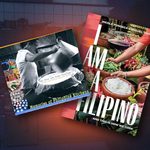
After a sunny stroll, I had lunch with a group of Korean students. I asked one of them about her view on Filipino food. She said that Pinoy cuisine may be “masarap (delicious),” but collectively, it tends to be oily, fatty, and too sweet.
In short, appetizing yet somewhat unhealthy. After the short conversation, she got a spoonful of chopsuey because, according to her, vegetables are a much healthier fare. The late Doreen Gamboa-Fernandez is known for her food criticism and teaching prowess.

She is one of the pillars of Filipino food writing along with literary giants Gilda Cordero-Fernand o and Clinton Palanca. Well-loved by her students in the Ateneo, the Queen of All Media Kris Aquino once sat in her writing class. Rumor has it that she is claimed to be Aquino’s favorite teacher, a hearsay I learned from a fellow teacher who eats showbiz news for breakfast.
Fernandez’s Palayok essay overviews how food symbolizes one’s cultural identity. As a melting pot, the Philippines is like a haluhalo , a sweet concoction made of shaved ice, milk, ube, random fruits, beans, and jellies. Often referred to as “halo-halo” and mistranslated by vloggers as “mix-mix,” this unofficial national dessert shares similarities in how Filipino cuisine is heavily influenced by a mixture of colonial influences adapted to the local palate.
The Chinese, despite not colonizing the Philippines, influenced Filipino cuisine. Pinoy comfort foods like lumpiang Shanghai and pancit Canton bear.














